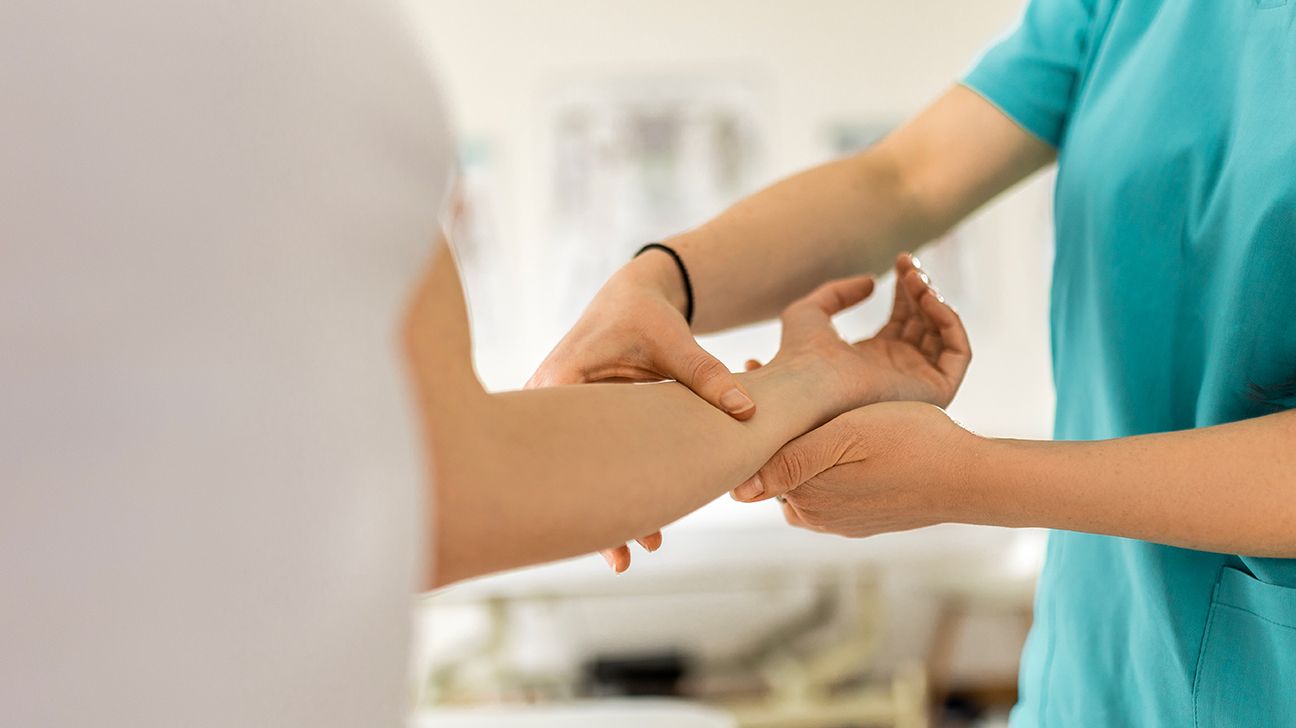Carpal tunnel syndrome can cause numbness and tingling in your fingers, hand, and forearm. Stimulating specific pressure points either by massage or acupuncture may offer relief.

Carpal tunnel syndrome is a common condition that causes pain, numbness, and tingling in your hand and forearm. It occurs when the main nerve to your hand, the median nerve, is pinched or compressed as it passes through your wrist.
Experts think that a combination of factors such as heredity, repetitive hand use, and various underlying health conditions may cause this condition.
While several carpal tunnel treatments, from physical therapy to surgery, are available, some people find relief through alternative methods, such as applying acupressure to carpal tunnel pressure points.
In this article, we’ll explore the concept of carpal tunnel pressure points and the kind of relief you might expect.
Pressure points are certain nerve centers in the body that, when stimulated or massaged, may help relieve certain health symptoms or affect various body areas. In the case of carpal tunnel syndrome, acupressure focuses on activating pressure points associated with the hand, wrist, and arm to relieve symptoms.
Some of the
- PC6 (Inner frontier gate or Neiguan): Located about three finger-width from your wrist crease, on the inner forearm. In addition to carpal tunnel symptoms, stimulating this point may also relieve nausea, and pain and help reduce symptoms of neuromuscular diseases.
- PC7 (Daling point): Located between the tendons at the midpoint of the wrist crease, stimulating this pressure point can cause the release of certain hormones that can lead to improved motor function and carpal tunnel relief.
- LI4 (Hegu): Located on the back of the hand between the thumb and index finger, this pressure point is known for its anti-inflammatory and pain-reducing effects.
- LI5 (Yangxi): Located on the radial side of the wrist, it is the depression between the tendons of the wrist muscles. In addition to helping with wrist pain, this pressure point is also useful with ear pain, finger stiffness and toothaches.
- TB5 (Waiguan): Located two finger widths from the wrist crease on the back of the wrist, pressure here will help reduce pain in the elbow, wrists, and hands. This point may also relieve migraine symptoms and headaches.
For carpal tunnel relief, you can manually massage these pressure points (acupressure) or stimulate them during acupuncture.
Carpal tunnel pressure points are most effective when massaged by an experienced therapist. Usually, this kind of acupressure involves the following steps:
- Locate the pressure point.
- Apply firm pressure on the pressure point with the thumb.
- Hold the pressure for about 30 seconds and then let go.
- Massage and stretch the general area.
Repeat this process as per your need, using the various carpal tunnel pressure points. Utilizing a gua sha stone or similar massage tool may also be helpful.
Acupuncture is an alternative treatment method that requires very thin needles that an acupuncture practitioner places into your skin at various pressure points. These needles are believed to help rebalance your body’s energy (qi) and help relieve your symptoms.
For people with mild to moderate carpal tunnel syndrome, acupuncture may be an effective alternative to medical treatments when an experienced clinician performs it.
In addition to pressure point therapy, these do-it-yourself methods may offer fast, short-term relief from carpal tunnel symptoms:
- exercising your wrist and stretching
- taking breaks from repetitive tasks
- using ice on the affected wrist
- elevating your hands and wrists
- warming up your hands
- keeping your wrists in a neutral position
- relaxing your grip
- trying over-the-counter anti-inflammatory medication
Other treatments for carpal tunnel
In addition to acupuncture and acupressure, traditional carpal tunnel treatments include:
- wearing wrist splints, especially at night
- trying physical therapy
- changing your work environment
- taking anti-inflammatory medications
- getting corticosteroid injections
- undergoing carpal tunnel release surgery
Talk with your doctor to determine the best treatment for you.
Carpal tunnel syndrome can significantly affect your day-to-day life. While doctors may recommend medication, splinting, and surgery treatments, if you have mild to moderate carpal tunnel syndrome, carpal tunnel pressure point therapy may be helpful.
This type of acupressure targets specific pressure points associated with the hand and wrist and may help manage carpal tunnel symptoms. Seeing an experienced massage therapist may increase your chances of carpal tunnel relief through pressure point massage.
